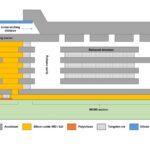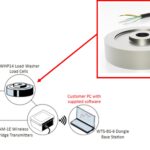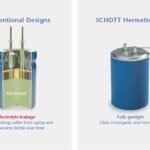 Ultra-high-energy Lithium Nickel Manganese Cobalt (NMC) Oxide battery technology is being credited with helping the Solar Impulse 2 plane complete its trip around the world using only solar power.
Ultra-high-energy Lithium Nickel Manganese Cobalt (NMC) Oxide battery technology is being credited with helping the Solar Impulse 2 plane complete its trip around the world using only solar power.
The Solar Impulse 2 uses four 38.5 kW-hr NMC battery packs with 150 A-hr cells, totaling 154 kW-hr of energy storage. The batteries are made by Kokam Co. Ltd. in South Korea.

Solar Impulse engineers load batteries on the plane before the First Round-the-World Solar flights late April 2016.
Over the course of 17 flights totaling 26,744 miles (43,041 km), the 17,248 solar cells on the plane produced 11,000 kW-hr of electricity, much of which was stored in NMC batteries and then discharged to power the plane at night. The Kokam NMC batteries provide an energy density of approximately 260 Wh/kg (about 929 MJ/kg). Kokam says the NMC cells have a 96% efficiency.
The Solar Impulse team also used Kokam’s NMC battery technology for the Solar Impulse 1, the first zero-fuel solar airplane to fly between continents and across the continental U.S.
During the plane’s flight from Nagoya, Japan to Hawaii, the Solar Impulse 2’s battery temperature rose because of a different flight profile than the one planned and because the gondolas (engine housings) were over-insulated considering the outside temperature. As a result, the Solar Impulse 2’s NMC batteries hit 50° C for an extended period, a temperature exceeding design specifications.

A head-on view of an NMC battery pack being slid into its bay on the motor nacelle.
It was impossible to rule out capacity loss or other battery damage, so for safety reasons the Solar Impulse team decided to replace the batteries with new ones. Later, post-flight tests of the original batteries determined they were undamaged, with only a small drop in capacity. However, to avoid potential battery overheating in the future, the Solar Impulse team installed a new cooling system designed with air vents. In addition, there’s a new backup system that lets the pilot manually open the container’s vent, letting outside air cool the batteries without letting them get too cold and freeze.
In addition, the Solar Impulse team also says future flight plans will be done in a way that gives the batteries enough time to cool between flights. The team also has adjusted its flight planning to avoid overheating batteries in tropical climates.






